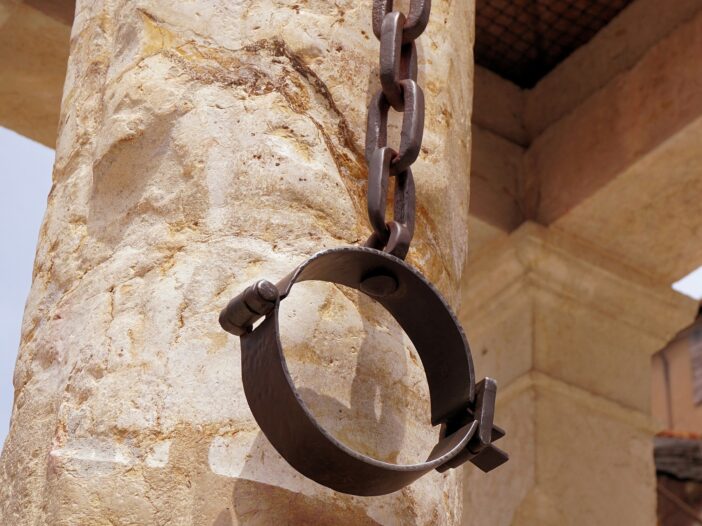
Life often doesn’t go our way. Humanly speaking, that could have summarized Luke 22, which chronicles the days between Jesus’ triumphal entry in Jerusalem to the night He was betrayed. It’s such a well-known chapter that it’s easy to overlook new lessons God may have for us in its familiar passages. That happened this month when God parked me on an unlikely verse, one I had ignored countless times.
“Judas consented, and began to look for an opportunity to betray Jesus to them in the absence of a crowd” (Luke 22:6). Yikes. Who wants to think about Judas, let alone talk about him?
Here’s why: Judas felt confident he could find a private time to turn Jesus over to the authorities. Let’s do a gut check on that perspective.
The players
The crowds
It was Passover week in Jerusalem. The city of about 300,000 swelled to bursting as two million pilgrims thronged Jerusalem’s streets. Jewish patriotism was on overdrive. Waving palm branches commemorated an event two hundred years prior when Judas Maccabeus rode from Galilee to Jerusalem and defeated the Greek (Seleucid) King Antiochus IV Epiphanes, who was persecuting the Jews. As Jesus entered Jerusalem, everyone hoped for something like that on a grander scale. Their shouts of hosanna literally meant “I beg you to save!” or “please deliver us!”
Herod and his contingencies
Herod’s lavish design for the second Temple included a complex called the Tower of Antonia. Staffed with 300–600 elite Roman forces, it was actually attached to the Temple. The fortress’s highest tower gave watchmen an uninhibited view of the Temple area and much of Jerusalem. Get this: A staircase led from the tower into the Temple so troops could respond to a disturbance within minutes. Talk about a first-century “big brother” tactic. Herod had enlarged the Temple to appease the Jews, but the Tower of Antonia was his insurance policy to keep them in check.
The chief priests
All their efforts past efforts to entrap Jesus had failed. They were willing to do something drastic, even ally themselves with Roman forces, to get rid of Jesus.
The Temple police
When the Jews’ religious court of law passed a judgment, Temple police were responsible for carrying it out. Although they reported to the chief priests, Pharisees, and Sanhedrin, the Temple police worked daily with the Romans stationed at the Tower of Antonia.
Judas
Judas thought he could control this tinderbox situation by picking a private time for Jesus’ arrest. Jesus had purposely camped outdoors on the Mount of Olives during Passover week, and Judas knew Jesus’ habit of going off by Himself to pray.
The fallout of sin
Let me just say that sin makes you do stupid things.
Sin deceived Judas into thinking he was doing something good when he should have been repulsed by the thought of it. Sin blinded his spiritual sensibilities and brainwashed him into believing he could control the situation.
Judas’s plan backfired spectacularly. About six hundred people—hundreds of Roman soldiers and Temple police, plus scores of priests and Pharisees, swarmed the Mount of Olives to arrest Jesus. The entire hillside was ablaze with torches, lanterns, and the glint of Roman armor. Anyone on the east side of Jerusalem would have seen the lights before the spectacle reached the city’s gates.
Matthew and Mark use the Greek word ochlos to describe the great multitude [crowd] of armed men that arrested Jesus. What a contrast to Luke 22:6, which says Judas purposed to avoid an ochlos. If he was horrified by Jesus’ all-too-public arrest, what did he think as the larger public spectacle unfolded?
The only things that go according to plan are God’s plans
Luke 22 shows that man’s plans, executed in man’s strength, will fail. Judas’s plan was a bust. Peter’s declaration at the Last Supper didn’t last a full day. The disciples fled when Jesus didn’t wield His power to come off the Cross. Herod thought he could control a spiritual matter by throwing the weight of Rome’s armed forces at it. And Satan thought he’d finally won. He had struck the Shepherd; His sheep would scatter.
God’s micro and macro planning
In contrast, every part of God’s plans for the Last Supper were fulfilled down to the last detail. On a basic level, it met the need for Jesus and His disciples to have a place to eat, rest, and observe Passover. It was also the spiritual backdrop for the ultimate Passover, as Christ tried to explain that evening through the first Communion. Luke 22 depicts God’s plans unfolding on a “micro” level in the lives of those men—as well as on His “macro” level of bringing salvation to the entire world. Who could engineer that but God?
Conclusion
Like the disciples, we can be thrilled, confused, or fearful of Jesus. When we don’t “get” His bigger picture, we’re tempted to let our circumstances, emotions, instincts, or human wisdom control our decisions. Instead, we should lean into Jesus.
His plans are perfect. He has delivered us from everything that separated us from God. I pray you experience that fully this Easter!
What are you thankful for this Easter season? Share in the comments!
This is the third installment of a Lenten series.
Read the first one here.
Read the second one here.
Never miss a post!





Thank you, Lana, for making the very public scene of Jesus’ arrest come alive. I’ve never visualized the torches and lanterns held by Roman soldiers as being so visible in Jerusalem.
What am I thankful for this Easter? I’m thankful and humbled that he has entrusted us to spread the good news of Christ’s resurrection. I’m praying He will bless you and mightily use you as well through your writing.
Thank you, Ginny! Many blessings to you!